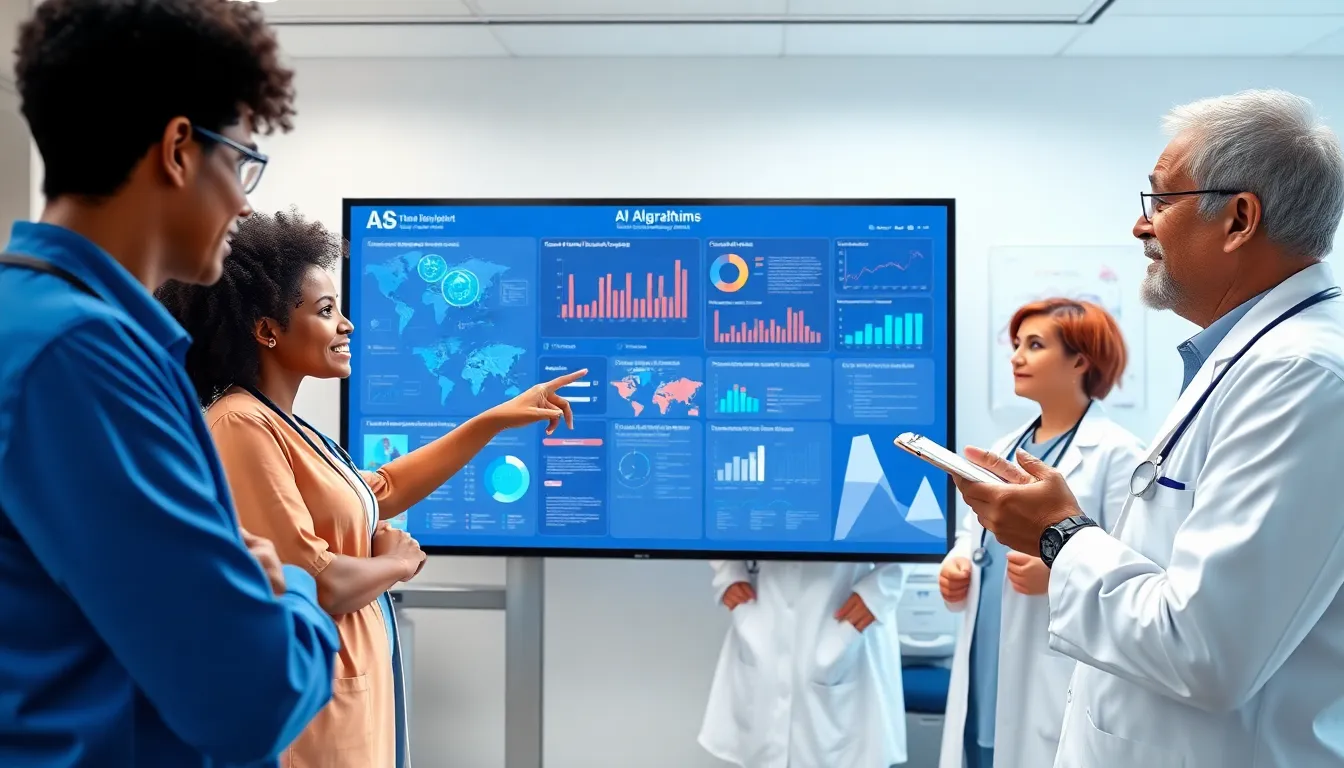In a world where your toaster might just be smarter than you, IoT event processing emerges as the unsung hero of the digital age. Imagine a universe where devices communicate seamlessly, exchanging vital information faster than you can say “smart fridge.” This isn’t just a tech fantasy; it’s the backbone of a connected ecosystem that’s revolutionizing industries and everyday life.
As billions of devices generate data at lightning speed, the ability to process this information efficiently is crucial. IoT event processing ensures that valuable insights are extracted in real-time, enabling businesses to make decisions quicker than you can brew a cup of coffee. Buckle up as we dive into the exciting world of IoT event processing, where the mundane becomes magical and every byte counts.
Table of Contents
ToggleOverview of IoT Event Processing
IoT event processing involves the real-time analysis and management of data generated by interconnected devices. Each device collects data, which, when processed efficiently, provides valuable insights into operations and user behavior. The ability to handle vast amounts of data from billions of devices marks IoT event processing as a cornerstone of modern technology.
Processing events in real time enables organizations to respond quickly to changes. Various industries, including healthcare, transportation, and manufacturing, leverage these capabilities to optimize their processes. For instance, smart healthcare systems analyze patient data from wearable devices to alert healthcare providers about urgent needs.
Event-driven architectures play a significant role in managing IoT data streams. Such architectures allow for the dynamic handling of events as they occur which improves decision-making. Tools and frameworks that support these architectures enhance the scalability and efficiency of IoT systems.
Many businesses adopt IoT event processing platforms to streamline operations. These platforms integrate with existing systems to deliver actionable insights. By harnessing data analytics, organizations can improve customer experiences and drive innovation.
Incorporating machine learning and artificial intelligence further amplifies the benefits of IoT event processing. Predictive analytics empower businesses to anticipate trends and enhance operational efficiency. As industries continue to evolve, the importance of IoT event processing remains critical for maintaining a competitive edge.
Key Components of IoT Event Processing

IoT event processing consists of several critical components that ensure effective data analysis and management. These components work in unison, transforming raw data into actionable insights for organizations.
Data Acquisition
Data acquisition captures data from various IoT devices, ensuring the input necessary for event processing. Sensors, smart devices, and gateways all contribute to this vital step by continuously gathering real-time information. Effective data collection methods enable systems to accommodate diverse data formats and protocols, facilitating seamless integration. Raw data from devices, whether it’s temperature readings or motion detection alerts, serves as the foundation for subsequent processing. Significant efficiency arises when data is gathered in a format that’s readily consumable, paving the way for better analysis.
Event Detection
Event detection identifies important occurrences from the streaming data gathered in the previous step. Algorithms analyze the incoming data for anomalies, patterns, or predefined conditions that trigger specific actions. Robust event detection mechanisms facilitate timely responses, particularly in critical areas like healthcare and logistics. For instance, monitoring devices may recognize significant changes in a patient’s condition and alert medical personnel instantly. High accuracy in event recognition leads to quicker insights, allowing organizations to act proactively rather than reactively.
Event Management
Event management orchestrates the response to detected events, ensuring appropriate actions are taken. This component includes prioritizing events based on urgency or business rules, helping organizations focus on what matters most. Various tools assist in tracking and managing events, enabling a centralized approach to streamline operations. Automated workflows often follow event detection, reducing manual intervention and enhancing efficiency. This coherent management allows for a comprehensive view of events, leading to better operational decisions across multiple sectors.
Technologies Used in IoT Event Processing
IoT event processing relies on various technologies to handle the influx of data generated by connected devices efficiently. These technologies facilitate real-time analysis and rapid responses across diverse industries.
Stream Processing Frameworks
Stream processing frameworks serve as the backbone of IoT event processing, enabling real-time data handling. Apache Kafka stands out due to its ability to process large data streams without delays. Apache Flink excels in supporting event time processing, making it suitable for complex event patterns. Another prominent framework, Apache Spark Streaming, offers batch-like processing for real-time data. Each framework plays a vital role in ensuring seamless data flow and low-latency responses.
Event Processing Languages
Event processing languages provide a structured way to query and manage event data effectively. Complex Event Processing (CEP) languages, like SQL-like languages, simplify event definition and processing. Esper uses an expressive syntax that supports event pattern detection. Another language, SASE, allows for a combination of data transformation with event handling. These languages enhance the ability to extract insights and drive timely decisions within IoT applications.
Data Storage Solutions
Data storage solutions play a crucial role in managing the vast amount of information generated by IoT devices. NoSQL databases, such as MongoDB, excel at handling unstructured data efficiently. Time-series databases, like InfluxDB, optimize storage for time-stamped data, ensuring quick queries for real-time analysis. Cloud storage solutions offer scalability, allowing businesses to adapt to growing data needs effortlessly. Each solution supports the overarching goal of turning raw data into valuable insights for actionable outcomes.
Use Cases of IoT Event Processing
IoT event processing enables a range of innovative applications across various sectors.
Smart Cities
Smart cities leverage IoT event processing for efficient resource management. Data from sensors monitors traffic flow, optimizing signal timings to reduce congestion. Streetlights adjust brightness in response to natural light conditions, conserving energy and reducing costs. Public safety benefits as surveillance cameras detect unusual activities, alerting authorities in real-time. Cities enhance overall livability and sustainability through improved urban planning based on insights from IoT data.
Industrial IoT
Industrial IoT utilizes event processing to enhance operational efficiency in manufacturing. Sensors monitor equipment performance, predicting failures before they occur. Production lines receive real-time insights, allowing for swift adjustments to minimize downtime. Supply chains gain transparency as IoT systems track inventory levels, enabling automatic restocking notifications. Companies achieve higher productivity and reduced operational costs with timely decision-making driven by real-time data.
Health Monitoring
Health monitoring applications harness IoT event processing to track patient conditions continuously. Wearable devices collect vital signs, sending alerts to healthcare providers when anomalies arise. Remote monitoring systems facilitate timely interventions, improving patient outcomes significantly. Telehealth services utilize data to personalize treatment plans based on real-time health metrics. Overall, IoT event processing transforms healthcare delivery, enabling proactive care and enhanced patient engagement.
Challenges in IoT Event Processing
IoT event processing faces several challenges that can impact its effectiveness in managing vast data streams.
Scalability Issues
Managing the scale of data from billions of IoT devices poses significant challenges. Systems may struggle to efficiently process large volumes of incoming data, leading to delays and missed insights. As devices increase, organizations need robust infrastructure capable of handling spikes in data traffic. Solutions like distributed computing can enhance scalability, yet implementation can require significant investment. Adjusting resources dynamically in response to load creates further complexity, necessitating advanced planning and ongoing optimization.
Real-time Processing
Real-time processing remains critical for the success of IoT applications. Latency in processing data can result in delayed responses, undermining the effectiveness of automated systems. Implementing strategies that minimize delays becomes essential for industries that rely on immediate insights. Techniques such as stream processing help facilitate quicker data handling, though they often require sophisticated software and hardware integration. Furthermore, achieving real-time processing demands continuous monitoring of performance to ensure that systems adapt to varying data loads.
Data Privacy Concerns
Data privacy concerns significantly impact the adoption of IoT event processing technologies. The collection of sensitive information raises alarms regarding unauthorized access and data breaches. Companies must comply with regulations like GDPR, which imposes strict guidelines on data handling and user consent. Implementing encryption and anonymization techniques assures users that their data remains secure. Ongoing efforts to enhance security measures are essential to maintain trust and foster wider adoption of IoT technologies.
Conclusion
The evolution of IoT event processing is reshaping how industries operate and interact with technology. By harnessing real-time data analysis organizations can not only enhance operational efficiency but also create personalized experiences for their customers. The integration of advanced technologies like machine learning and artificial intelligence further amplifies these benefits enabling predictive capabilities that drive innovation.
As IoT continues to expand the importance of effective event processing cannot be overstated. Organizations must embrace robust infrastructures and address challenges to fully leverage the potential of IoT. The future holds immense possibilities for those who adapt and innovate in this dynamic landscape.





